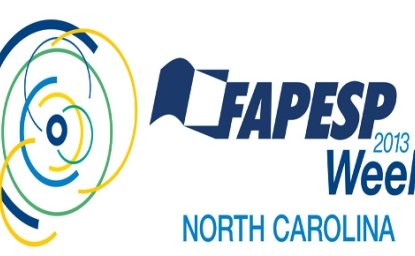Download Report
WASHINGTON—Thanks to nanotechnology, tomorrow's food will be designed by shaping molecules and atoms. Food will be wrapped in "smart" safety packaging that can detect spoilage or harmful contaminants. Future products will enhance and adjust their color, flavor, or nutrient content to accommodate each consumer's taste or health needs. And in agriculture, nanotechnology promises to reduce pesticide use, improve plant and animal breeding, and create new nano-bioindustrial products.
The Helmut Kaiser Consultancy estimates that the nanotech food market is growing rapidly and will reach over $20 billion by 2010—about three times its current size. A recent study by Cientifica found over 150 nanotechnology applications in the food industry at present, with some of the world's biggest companies—like Altria, Nestle, Kraft, Heinz and Unilever—involved in nanotechnology research and development.
The U.S. government is investing in nanotech agrifood as a part of its annual $1.2 billion nanotechnology research budget. A new report, Nanotechnology in Agriculture and Food Production: Anticipated Applications, for the first time analyzes the publicly available data on federally funded research projects in agrifood nanotechnology, supplemented with data from the U.S. Patent and Trademark Office.
 Written by Jennifer Kuzma and Peter VerHage from the University of Minnesota's Center for Science, Technology, and Public Policy, the report estimates possible areas and timeframes for future nanotechnology-based food and agriculture applications. It takes an early look at potential benefits and risks, and it explores possible areas and needs for environmental, health and safety oversight. Their work also resulted in creation of a searchable, online database with over 160 research projects available at: http://www.nanotechproject.org/50.
Written by Jennifer Kuzma and Peter VerHage from the University of Minnesota's Center for Science, Technology, and Public Policy, the report estimates possible areas and timeframes for future nanotechnology-based food and agriculture applications. It takes an early look at potential benefits and risks, and it explores possible areas and needs for environmental, health and safety oversight. Their work also resulted in creation of a searchable, online database with over 160 research projects available at: http://www.nanotechproject.org/50.
Today's nanotech food products include a new variety of canola oil containing tiny materials that can block cholesterol from entering the bloodstream, and a chocolate milkshake that supposedly tastes better and is more nutritious than conventional shakes—thanks to the unusual properties of a new ingredient that is 100,000 smaller than a grain of sand. Nanoscale droplets of a new substance have been added to pesticides so that formulations that once had to be shaken every two hours to prevent ingredients from separating now hold together for up to one year.
"The number of nanotechnology food products currently being sold appears to be relatively small," said David Rejeski, director of the Project on Emerging Nanotechnologies, which supported this study. "But with millions of dollars being spent globally by both government and industry to apply nanotechnologies in areas such as food processing, food safety and packaging, and agricultural production, it is the right time to start asking a number of related questions: What nano-engineered food products will appear on the market over the next year or two? What are the potential benefits and risks? Who will be affected? And how can consumers become engaged early on?"
"The goal of this report is to look upstream in order to develop an early understanding about what is on the nano agrifood horizon," said Dr. Kuzma. "In its current form, the report and data only scratches the surface of potential applications. Nonetheless, it is sufficiently informative to serve as a starting point for a more in-depth dialogue among consumers, business, and government about the near-and long-term uses of and safeguards for nanotechnology in food and agriculture. Particularly, it provides an early guidepost to the U.S. Department of Agriculture, Environmental Protection Agency, and Food & Drug Administration."
"If nanotechnology is to succeed, we must have an open policy discussion that is informed by a clear understanding of how products are moving from laboratories and farms to factories and stores, and into people's kitchens and environment. The Project on Emerging Nanotechnologies is committed to helping facilitate the necessary analysis and risk research around nanotechnology agrifood to provide practical and sound policy choices," according to Project Director Rejeski. The Project is an initiative of the Woodrow Wilson Center and The Pew Charitable Trusts.
Nanotechnology is the ability to measure, see, manipulate and manufacture things usually between 1 and 100 nanometers. A nanometer is one billionth of a meter; a human hair is roughly 100,000 nanometers wide. The National Science Foundation predicts that the global market for goods and services using nanotechnologies will grow to $1 trillion by 2015. The U.S. invests approximately $3 billion annually in nanotechnology research and development, which accounts for approximately one-third of the total public and private sector investments worldwide.
The Kuzma and VerHage report, Nanotechnology in Agriculture and Food Production: Anticipated Applications, is available online, along with an early webcast of their findings here.
Jennifer Kuzma, Ph.D., joined the Hubert H. Humphrey Institute of Public Affairs and the Center for Science, Technology and Public Policy (CSTPP) at the University of Minnesota in 2003. Prior to this, she served for four years as program director and senior program officer at the National Academy of Sciences' National Research Council (NRC). She earned her Ph.D. in biochemistry from the University of Colorado at Boulder in 1995 and was subsequently a research fellow at the Rockefeller University in the Laboratory for Plant Molecular Biology. She currently serves as assistant professor at the University of Minnesota and as associate director of the CSTPP.
Peter VerHage graduated from North Park University with degrees in biology and in politics and government in 1999. He completed an M.S. degree in science, technology, and environmental policy at the Hubert H. Humphrey Institute at the University of Minnesota and was a research assistant at CSTPP.




